STUDY: AIR POLLUTION FROM FRACKING LINKED TO DEATHS IN PENNSYLVANIA Press Release by Jennifer Micale, June 18, 2020, Binghamton University, State University of New York
Approximately 20 people in Pennsylvania lost their lives during a seven-year period because of particulate matter pollution emitted by shale gas wells, according to a recent study.
The researchers —including lead author Ruohao Zhang, a Binghamton University graduate student who specializes in environmental economics, and Professor of Economics Neha Khanna — used NASA satellite data to pinpoint daily levels of particulate matter pollution from hydraulically fractured gas wells throughout Pennsylvania, the largest producer of shale gas in the United States.
The study’s authors also include Huan Li PhD ’15, now with North Carolina Agricultural and Technical State University’s Department of Economics; Daniel M. Sullivan of J.P. Morgan Chase Institute in Washington, D.C.; Alan J. Krupnick of Resources for the Future, also in D.C.; and Elaine L. Hill of the University of Rochester’s Department of Public Health Sciences. The project was partly supported by a Harpur Faculty Research Grant.
The study discovered a correlation between shale gas extraction with particulate matter pollution and mortality in areas where active wells are sited. From 2010 to 2017, the period covered by the study, fracking-related air pollution led to at least 20.11 additional deaths — translated into an economic cost of nearly $149 million. The most affected part of the state was Washington County, which saw an additional 4.26 deaths caused by fracking-related air pollution during those seven years.
Particulate matter with a diameter less than or equal to 2.5 microns, or PM2.5, is associated with cardiovascular diseases and several respiratory ailments, including chronic obstructive pulmonary disease (COPD) and asthma. Sensitive populations — including children, the elderly and those with pre-existing conditions — are particularly vulnerable to these health effects, Zhang and Khanna said.
The airborne pollution was detectable up to 10 kilometers — approximately 6 miles — downwind from an active well, and possibly further, according to Zhang and Khanna.
Levels are highest before the wells go into production, while the well pads are being prepared and the sites drilled and fracked, although active wells continue to produce PM pollution at detectable levels, the research shows.
“The air pollution decreases once the well starts producing gas, though in the first one to two years it is still almost as high as during the pre-production period,” Khanna explained. “There is a notable decline in the air pollution as the well ages and gas production decreases.”
Looking at the air
Scholars and the public at large have been documenting changes in health outcomes in areas that have experienced unconventional shale gas development, known as fracking. The exact mechanism for health effects is unclear, Zhang explained.
“We wanted to know if air pollution is part of the explanation,” he said. “While there has been a lot of attention in the media about the potential for drinking water contamination in areas with hydraulically fracked wells, the air pollution effects have been mostly ignored.”
Particulate matter is only one of the many air pollutants associated with unconventional wells. But to pinpoint a potential increase in air pollution, the researchers needed a way to measure it close to the wells and on a daily basis. Under the Clean Air Act, the U.S. Environmental Protection Agency has been monitoring the level of six different air pollutants with ground monitors for many years, but the monitors are concentrated in areas with high population density — not the rural areas where most fracked wells are located.
Rather than focusing on ground monitors, the researchers looked to the skies, where two NASA satellites, called Terra and Aqua, measure aerosol optical depth (AOD) every day, all across the world. AOD measures particulate matter by looking at the way light is absorbed or scattered through a vertical column of air from the ground to the satellite sensors.
The researchers then used the AOD measurements to detect changes in particulate matter pollution. The NASA satellite data, which made the study possible, only became available around two years ago.
“To be honest, when we started the project, we were unsure that the changes in PM pollution would be large enough to be detected by the satellites, but they are,” Khanna said.
In light of the research, Zhang recommends that people who live near fracking wells take precautions to safeguard their health, such as avoiding exercise or playing outdoors near the wells. ![]() And what of the many people living frac’d rurally who must work outside near the wells on their farms and properties? Who provides us PPE? Who cleans up the deadly pollution? The polluting frac’ers? Deregulators? The lying, coniving, pollution and health-harm enabling politicians that steal our health care, education, and pensions to give to the polluters (most foreign owned), enabled by our corrupt inaccessible courts?
And what of the many people living frac’d rurally who must work outside near the wells on their farms and properties? Who provides us PPE? Who cleans up the deadly pollution? The polluting frac’ers? Deregulators? The lying, coniving, pollution and health-harm enabling politicians that steal our health care, education, and pensions to give to the polluters (most foreign owned), enabled by our corrupt inaccessible courts?![]() Staff at wells should consider wearing masks to lower their exposure to PM2.5 pollution, because even a short exposure can affect health, he said.
Staff at wells should consider wearing masks to lower their exposure to PM2.5 pollution, because even a short exposure can affect health, he said.
Pennsylvanians also should be aware that their decision to lease their land for drilling can potentially affect not only their health, but that of the community downwind from a well, Zhang pointed out. ![]() In Canada, most landowners don’t have a choice, and in America, if too many landowners say no, wanting to protect their health and that of others in their community, companies go to judges all too happy to take away the landowners’ rights via eminent domain, sometimes refusing payment or worse, making those wanting to protect their health pay huge costs to the health harming frac’ers.
In Canada, most landowners don’t have a choice, and in America, if too many landowners say no, wanting to protect their health and that of others in their community, companies go to judges all too happy to take away the landowners’ rights via eminent domain, sometimes refusing payment or worse, making those wanting to protect their health pay huge costs to the health harming frac’ers.![]()
“They should work with their elected officials to regulate the air pollution from unconventionally developed wells. In the long term, this will benefit the local population and the gas industry,” he said. ![]() What planet does he live on? What regulator in the world, will help any of us, being poisoned by frac’ers? I know of none, anywhere in the world. They’re too busy exchanging favours with companies to deregulate more and more, and helping cover up the many corporate crimes, with too many lawyers helping the polluters and deregulators betraying the public interest and stabbing in the back the few civil clients that do try to seek the all elusive “justice.”
What planet does he live on? What regulator in the world, will help any of us, being poisoned by frac’ers? I know of none, anywhere in the world. They’re too busy exchanging favours with companies to deregulate more and more, and helping cover up the many corporate crimes, with too many lawyers helping the polluters and deregulators betraying the public interest and stabbing in the back the few civil clients that do try to seek the all elusive “justice.”![]()
Air pollution from fracking killed an estimated 20 people in Pennsylvania from 2010-2017: Study, Scientists say spikes in particulate matter pollution near wells are cutting lives short by Kristina Marusic, June 5, 2020, Environmental Health News
Particulate matter pollution emitted by Pennsylvania’s fracking wells killed about 20 people between 2010 and 2017, according to a soon-to-be-published study.
Pennsylvania is the second-largest producer of natural gas in the U.S. after Texas. Between 2010 and 2017, there were 20,677 permitted fracking wells in the state, about half of which had been drilled. Fracking, another name for hydraulic fracturing, is a process of extracting oil and gas from the Earth by drilling deep wells and injecting liquid at high pressure.
One of fracking’s byproducts is particulate matter pollution, also referred to as PM 2.5, which consists of tiny, airborne particles of chemicals that, when inhaled, make their way into the lungs and bloodstream, increasing cancer risk and causing heart and respiratory problems. Exposure to PM 2.5 kills an estimated 20,000 Americans each year.
Previous studies have found that heavily-fracked communities face higher rates of numerous health effects including preterm births, high-risk pregnancies, asthma, and cardiovascular disease—but this is the first to investigate the direct relationship between the local increase in PM 2.5 caused by fracking and deaths from respiratory and heart issues that can be attributed to that increase.
“Our study is not only looking at negative health outcomes, but investigating how fracking actually caused these deaths through increased air pollution,” Ruohao Zhang, a researcher at Binghamton University who specializes in environmental economics and the study’s lead author, told EHN.
Zhang and a team of four other researchers used satellite data from NASA to calculate daily PM 2.5 emissions from all fracking wells in the state over the seven-year period between 2010 and 2017. To determine how many people died as a result of exposure to those emissions, they used county-level mortality data from the U.S. Centers for Disease Control and Prevention paired with established methods for calculating how many of the deaths seen in Pennsylvania during that time period were caused by increases in PM 2.5 exposure.
“The levels of increased PM 2.5 concentrations that came from fracking wells in the state are associated with about 20 additional deaths during that time period,” Zhang said. These are deaths that presumably would not have occurred in the absence of air pollution from fracking. The estimated economic loss caused by these additional deaths is around $148 million, according to the study.
Washington County was the most heavily affected county in the state, with an additional 4.26 deaths caused by PM 2.5 emissions caused by fracking between 2010 and 2017.

“When we accounted for airborne spillover of pollution from multiple wells in the same area we found that, overall, fracking made the particulate matter pollution of a three-kilometer area around each well [roughly 1.8 miles] higher by between 1.27 percent and 5.67 percent,” Zhang said, explaining that the high end of that spectrum usually reflected a higher density of wells in the area.
While the increase in PM 2.5 was highest closest to the fracking wells, Zhang noted that increased levels of the pollutant were also detectable at least as far as 10 kilometers (about 6 miles) downwind of emission sources.
The study also found that without accounting for “spillover,” each individual well caused an increase in PM 2.5 in the surrounding three-kilometer area of between 1.35 percent and 2.19 percent. The higher end of that spectrum generally represents wells in the active drilling phase, while the lower end generally reflects the pollution caused by wells that are already up and running, or in the “production” phase.
The NASA satellite data the researchers used became available about two years ago. Without it, Zhang said, it would have been impossible to calculate the specific air pollution increase caused by fracking in the state due to a lack of continuous, on-the-ground air monitoring systems.
“In the U.S., air quality regulations are highly dependent on ground-based monitors, which only cover a small portion of the whole country,” Zhang said, noting that this is especially true in rural areas that tend to be home to lots of fracking. Even in places that are covered by ground monitors, he added, monitoring is rarely continuous—they often only take samples every six, eight, or 16 days.
“There are huge monitoring and data gaps there, allowing for what’s referred to as ‘unwatched pollution,'” Zhang said. “But this satellite data allows us to continuously monitor air quality everywhere.”
The NASA satellite data itself doesn’t directly relay air pollution data. Researchers like Zhang look at the degree to which aerosols in the air prevent the transmission of light to determine concentrations of PM 2.5. While this method has previously been used to estimate PM 2.5 levels across the globe or over specific countries or continents, Zhang said, it’s most accurate when used to calculate air pollution in a smaller area, such as a single state.
Based on their findings, Zhang said he would encourage local and state elected officials to regulate the shale gas industry to reduce PM 2.5 emissions and protect the health of residents. In the meantime, he said, people living near fracking wells who are concerned for their health can minimize the impacts of PM 2.5 exposure by keeping their windows closed and not exercising outdoors in close proximity to operational wells.
“I would also tell residents in Pennsylvania that if they learn they have shale gas under their property, they should be aware that their decision about whether or not to lease their land for drilling may impact not only their own health, but the health of their neighbors as well,” he added.
Zhang also pointed out that while their study focused on deaths caused by PM 2.5 pollution from fracking, the extraction also generates many other kinds of pollution—such as volatile organic compounds and radioactive waste—that can endanger the health of residents and should be accounted for.
“We think it’s important to know how every kind of pollutant caused by fracking impacts human health,” he said. “We hope that future studies will help us more fully understand the impacts of fracking on local communities.”

Refer also to:
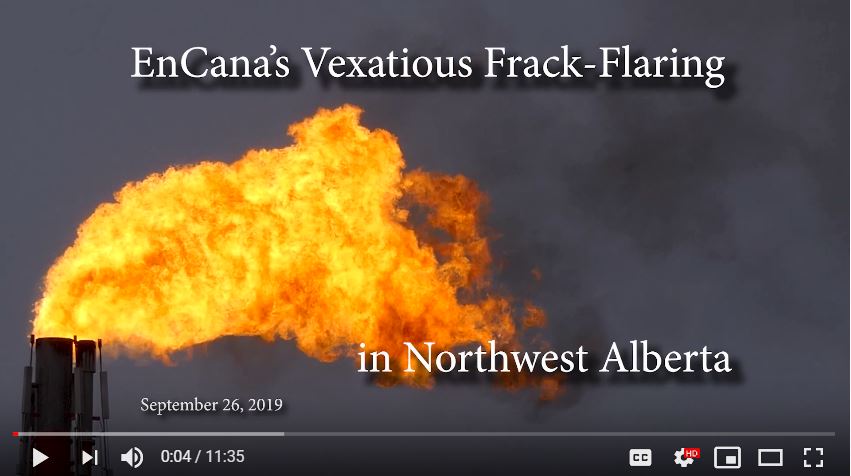
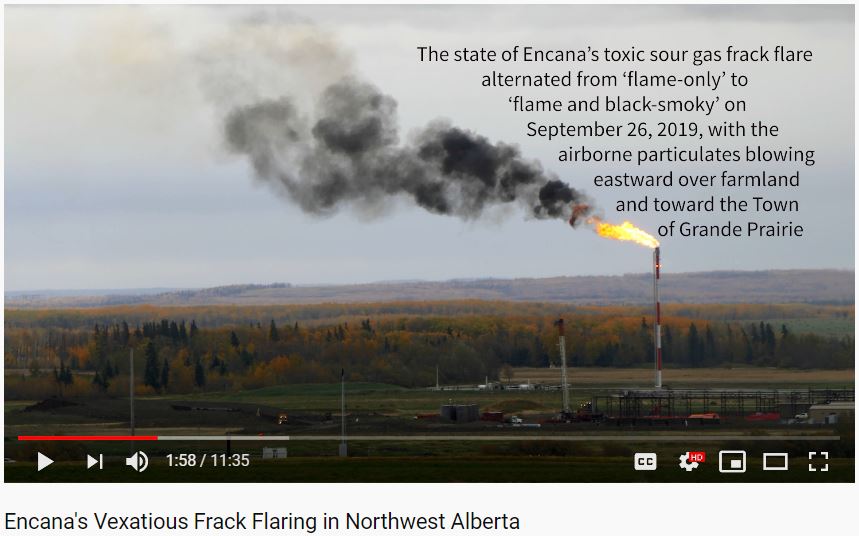
The nasty particulate-loaded pollution as seen above by frac’ers like Encana/Ovintiv is standard. I’ve seen it often in my community and many others.
2018: UK, New Study: Fracking is one of the most harmful forms of energy production
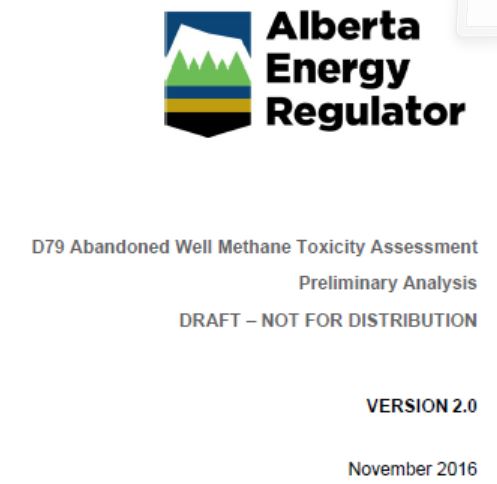
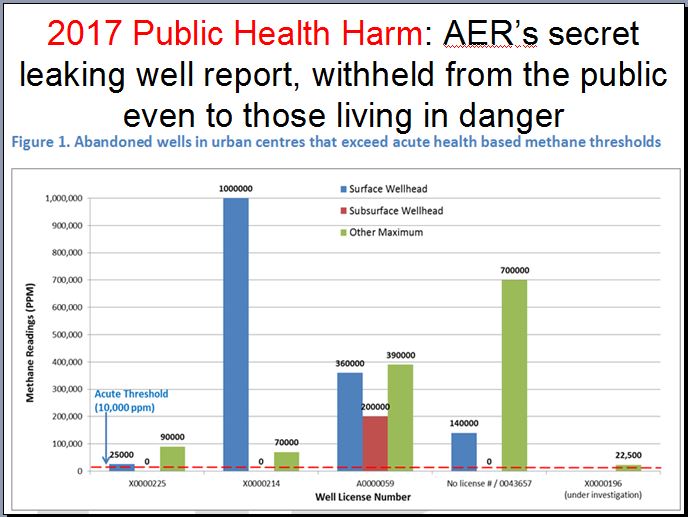
Note the red dotted line in graph above: “Acute-Life Threatening, Emergency Evacuation Threshold”
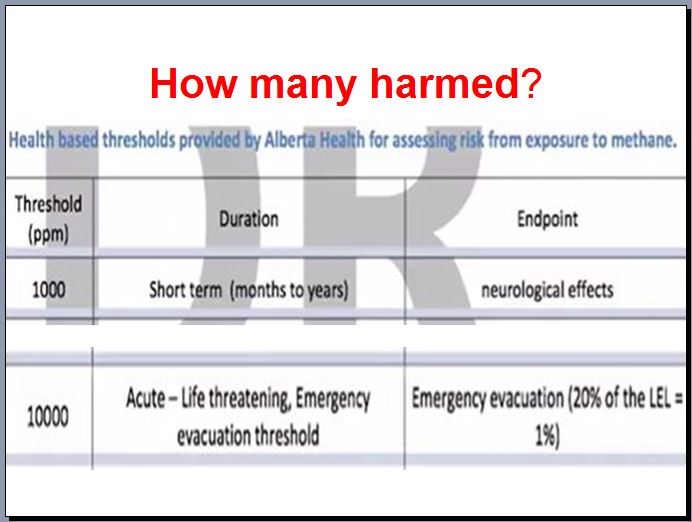
2017: Study by Cornell University to be released early 2018, Did Fracking sicken Tioga Downs’ foals?
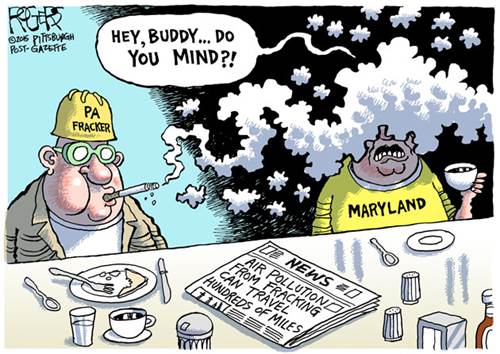
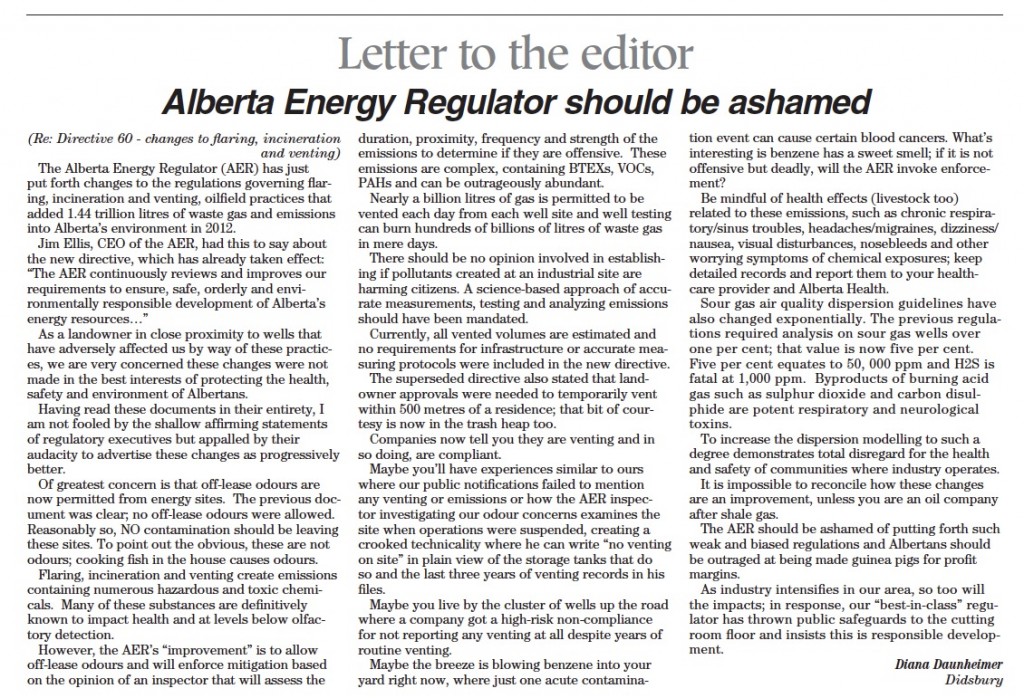
1.1.2.2 Description of Threat
Over 16 different chemicals products were staged on the Pad at the time of the explosion and subsequent fire. Materials present on the Pad included but was not limited to: diesel fuel, hydraulic oil, motor oil, hydrochloric acid, cesium-137 sources, hydrotreated light petroleum distillates, terpenes, terpenoids, isoproponal, ethylene glycol, paraffinic solvents, sodium persulfate, tributyl tetradecyl phosphonium chloride and proprietary components. As a result of fire-fighting efforts and flow back from the well head, significant quantities of water and unknown quantities of products on the well pad left the Site and entered an unnamed tributary of Opossum Creek that ultimately discharges to the Ohio River. Runoff left the pad at various locations via sheet flow as well as by two catch basins located at the northwest and southeast corners of the well pad.
New Analysis and Science Answer Governor Cuomo’s Concerns about Science: Studies Overwhelmingly Show Public Health Hazards and Risks
Health Professionals Urge Governor Cuomo to Enact 3-5 Year Moratorium on Fracking given Scientific Studies and Trends
Among the key findings:
- 96% of all studies published on health impacts indicate potential risks or adverse health outcomes.
- 87% of original research studies published on health outcomes indicate potential risks or adverse health outcomes.
- 95% of all original research studies on air quality indicate elevated concentrations of air pollutants.
- 72% of original research studies on water quality indicate potential, positive association, or actual incidence of water contamination.
- There is an ongoing explosion in the number of peer-reviewed publications on the impacts of shale or tight gas developments: approximately 73% of all available scientific peer-reviewed papers have been published in the past 24 months, with a current average of one paper published each day.
Anthony Ingraffea, PhD, Dwight C. Baum Professor of Engineering, Cornell University, said, “In 2008, when New York State first declared a moratorium on fracking, only six peer-reviewed papers on the health and environmental impacts had been published. Now there are more than 400, and the vast majority show a clear and present danger.
What’s more, many problems are unfixable by regulations of any kind. It was a wise governor who said ‘wait’ in 2008. And it is wise to continue to wait.”
David Kattenburg: Why aren’t these things being monitored for in the gases that are coming out from flaring and incineration stacks?
Bob: The long list that you’ve identified would be the responsibility for monitoring of not only the Alberta Energy Regulator, but the Environment department themselves, and I would direct you once again to ESRD for them to identify what their plans are relative to updating those guidelines.
David: I have actually, I’ve tried valiantly I’d say to try to get them to explain to me why they have these guidelines that say all industry MUST conform to these guidelines, and then I said well why does directive 60 of the Alberta Energy Regulator only establish monitoring requirements for sulfur dioxide and he said: “speak to the Alberta Energy Regulator.”
Bob: Um, it is important, and this is something the Energy Regulator does lead, is capturing the metrics of the volumes of material, so we do have good metrics as to the volumetrics.
David: But essentially nothing about the composition of those gases, other than sulfur dioxide.
Bob: A totally accurate composition, I would certainly volunteer that no, we do not have a totally accurate comprehensive information on the flare composition rather, we have it for the uh volumes, but not necessarily for the compositions.
Canaries in Coal Mines, Air Monitoring Appeals

Diana Daunheimer at her home near Didsbury, Alberta. Photo by David Kattenburg
THE OVERLOOKED CONNECTION BETWEEN HUMAN HEALTH AND FOSSIL GASES
Scientists have proven that human induced climate change and global warming are from burning fossil fuels and are seeking alternative energy sources. Adding to the urgency is the evidence from other scientists who have proven that humanity is facing a more imminent threat to survival because of the overlooked alternative uses of the fossil gases that surface during drilling for oil and gas. Methane and a group of semi-gaseous liquids called the aromatics are both separated from the raw gas on the well pads and enter separate pipelines. The aromatics, including benzene and toluene, are comprised of six carbon atoms attached in a circle called the benzene ring. Chemists use this carbon ring as the building block for the production of practically everything the infrastructure and economy of modern society is dependent upon.
Over the last 50 years as exposure to chemicals derived from fossil gases has increased so have the number of global pandemics attacking the human endocrine system. In the US alone, almost half the individuals born today will become diabetic and/or obese; one of every 88 babies born has autism spectrum disorder. For boys it’s one in 54. The cost of treatment and care for these problems along with infertility, Parkinson’s and Alzheimer’s Disorders, and hormone driven cancers are in the trillions but are in-estimable because they are increasing so rapidly. All of these disorders have been traced back to prenatal, early life, and/or adult exposure to chemicals derived from these oil and gas condensates that interfere with the normal function of the endocrine system that assures species integrity and perpetuity. Before the 1930s these ailments were rare.
Hormones, like these new chemical based products, are made with different permutations and combinations of benzene rings. As signaling chemicals, hormones keep cells and tissues alive, control fertilization of the egg, initiate the construction of the baby in the womb and how it will function, mature, and senesce. Hormones function in concentrations of parts per billion, per trillion, and less. At and following fertilization the slightest shift in a hormone signal can trigger a chain of events starting from the cell to glands and systems that develop and the ensuing 12 dysfunction may not be expressed until years later. The earlier the shift the greater the damage later on.
For 20 years independent scientists around the world have shown how chemicals that disrupt the endocrine system (endocrine disruptors, or EDs) fool the tissues that respond to natural hormones causing irreversible changes in structure and function; in some studies through three generations. These ED scientists were able to induce alterations in intelligence and behavior by introducing specific EDs as the brain commenced to develop. Direct exposure to benzene and toluene interferes with endocrine control of the brain, heart, nervous, and immune systems, and also causes immediate effects to the eye, skin, and nervous system similar to complaints from those living and working in gas fields.
In addition, another class of ignored gas that escapes at the well head, the polycyclic aromatic hydrocarbons (PAHs) were found in a neighborhood immersed among natural gas wells at concentrations 3 times higher than those detected in a study done in New York City where pregnant woman wore back pack air monitors. The NYC babies exposed to the higher concentrations of PAHs were pre-term, had low birth weights, smaller than norm skull circumferences, and by age 5 had lower IQs. At age seven they had attention, behavior, and metabolic problems, and were obese.
EDs dehumanize the human race by stealing the ability to love, socialize, enjoy each other, and sit down to converse with others in order to solve problems. Now into the fourth generation of individuals exposed to fossil derived EDs the prognosis is bleak. The recent rapid increase in human health pandemics, especially autism spectrum disorder, provides powerful re-enforcement to the climate change argument. Governments must take heed immediately or there will be too few healthy, intelligent individuals left to preserve our humanitarian society and create some semblance of world peace.
Theo Colborn PhD
November 14, 2014 (1927–2014)
2014: Why was a 2012 Health Canada Report, admitting significant health hazards and risks to groundwater and air from hydraulic fracturing, kept from the public? Health Canada still has not made the report public!
2014: New Study: The more natural gas wells in an area, the more residents end up in hospital
2014: Proposed drilling in Lethbridge carries too many risks: Letter by Dr. Tyson B. Brust
2013: Elaine Hill: The Impact of Oil and Gas Extraction on Infant Health in Colorado
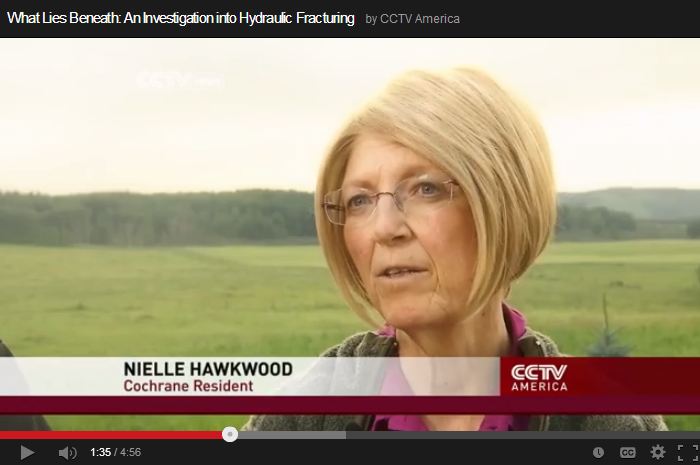
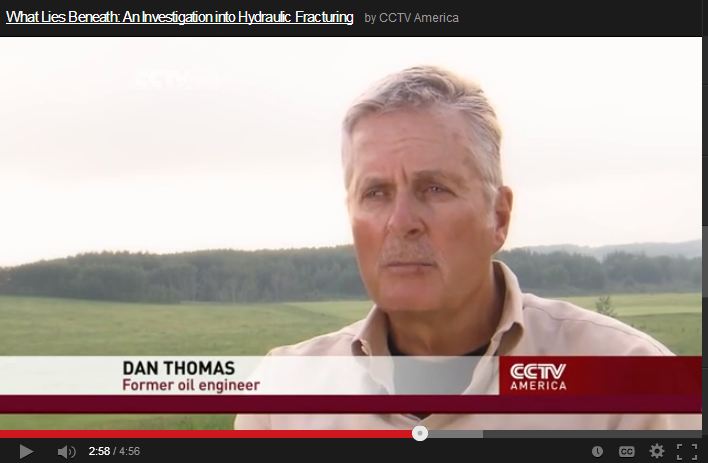
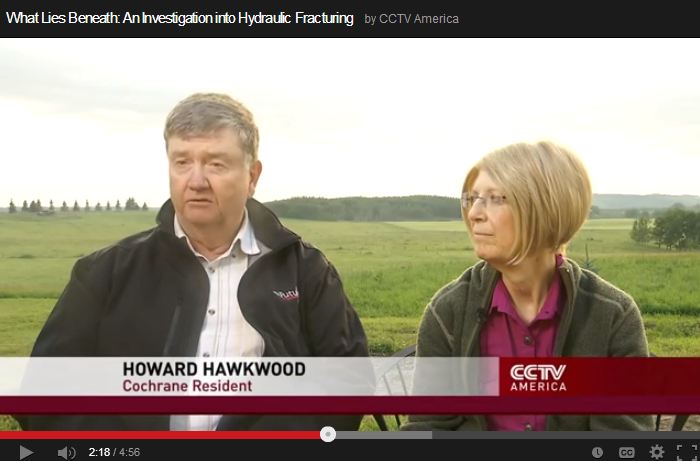
2013: Surprise 2 year delay in major US EPA fracking study
2013: Study outlines risks of injecting waste into aquifer, as Encana has applied to do
Methylene chloride, a toxic solvent not reported in products used in drilling or hydraulic fracturing, was detected 73% of the time; several times in high concentrations.
2012: An exploratory study of air quality near natural gas operations
2012: B.C. gas-well health study by Intrinsik Environmental Sciences Inc. called into question
2012: Industry-Funded Study Finds Fracking Safe for Los Angeles
2012: Penn State Faculty Snub of Fracking Study Ends Research
2012: The University of Colorado Boulder gets $12M grant to study natural gas development, impacts
2012: State Considering Studying Health Impacts of Fracking
2012: Broome medical agency asks Vestal to support health study on fracking
2012: Industry money and questionable ethics contaminate UT Austin fracking study
2012: Study claims hydraulic fracturing may pose health risks
2012: Link Between Low Birth Weight and Fracking, Says New Research
2012: Ohio passes one of the worst fracking laws in the U.S. but best for health harming, polluting frac’ers!
Frac’ing: It’s only done with kittens & cream, perfectly sweet & safe!
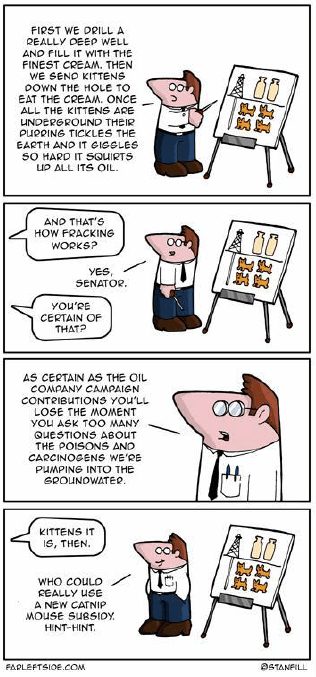
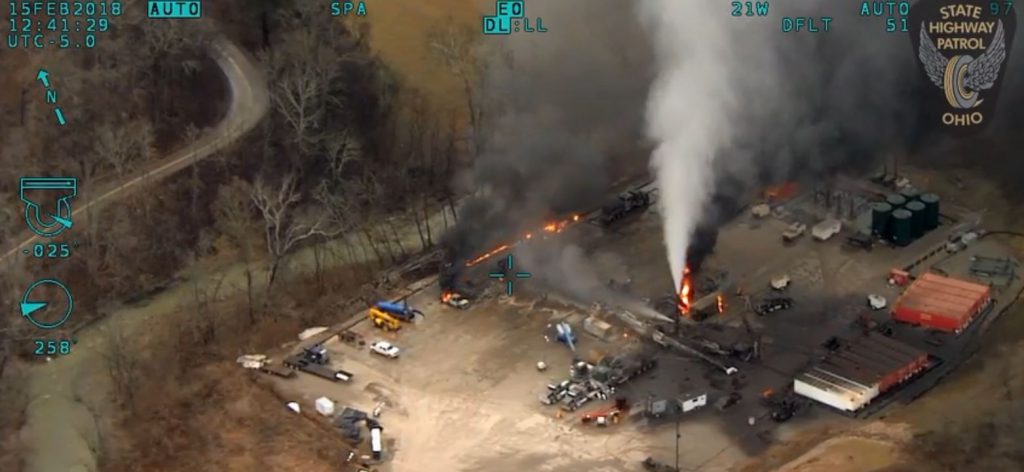
2018 frac blow out in Ohio
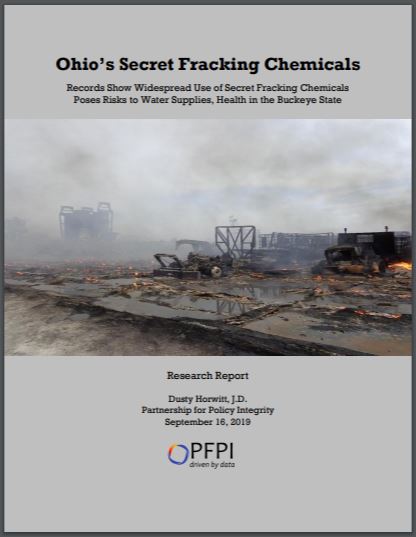
2012: Study finds health risks to well-pad neighbors
2012: Study shows air emissions near fracking sites may pose health risk
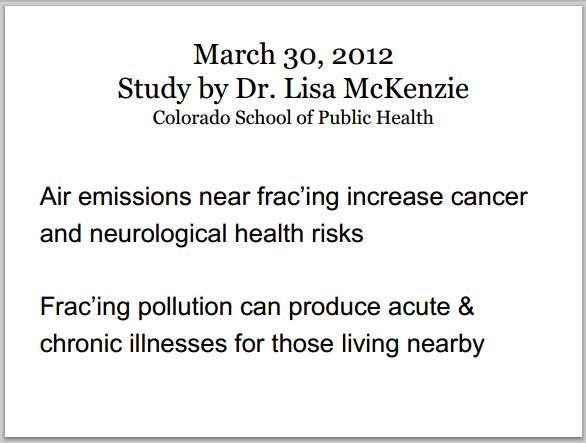
2012: Colorado study finds fracking risks for nearby residents
2012: Colorado study links fracking to air pollution
2012: NY Assembly calls for fracking health impact study
2012: Study: Fracking Could Be Killing Farm Animals, Pets
E012: Episode 1 – New Brunswick Government Shale Gas Session, Dr. Angela LeGresley
I made it known that I was a physician…I made my health concerns known and stood up despite being very intimidated surrounded by oil and gas industry people and politicians.” …
“If they have an abundance of peer-reviewed studies, health impact assessments, etc., all the kind of things that would reassure me, and I need more than regulations to reassure me, I need, as a physician I need more than that…if they have this kind of thing, they should be giving it to me I think. They should be responding to my letters, they should be calling me.” …
“I would just encourage them if they had that information to get a hold of me but, I know that most of the peer-reviewed information has only started in April 2011 and that’s why we need a lot more of it, we need more studies, and that’s why we cannot go forward right now. We need a moratorium. The Moncton City Hospital physicians have voted for a moratorium.” [Standing ovation] …
“You probably already know that The [New Brunswick] College of Family Physicians have also voted for moratorium and I would be willing to say that there are going to be more physicians following this.” …
“Try to get answers, I’m not sure how to get them to respond….”
… “We need health impact assessments, not just environmental impact assessments, there is only one that I know of, and that was in Colorado.” …
“I think the people have spoken.” …
“It’s not just a few little wells, they need to frac a lot” …
“I will sleep well at night, knowing that I spoke up.” [Standing ovation]
2012: Ernst asked numerous authorities in Canada and Alberta to address my health concerns about frac’ing. None responsibly responded; I only rec’d deflections or no response at all. Now, in 2020, we know why. They knew those living by frac’ing were/are being poisoned. Evil f*cks.
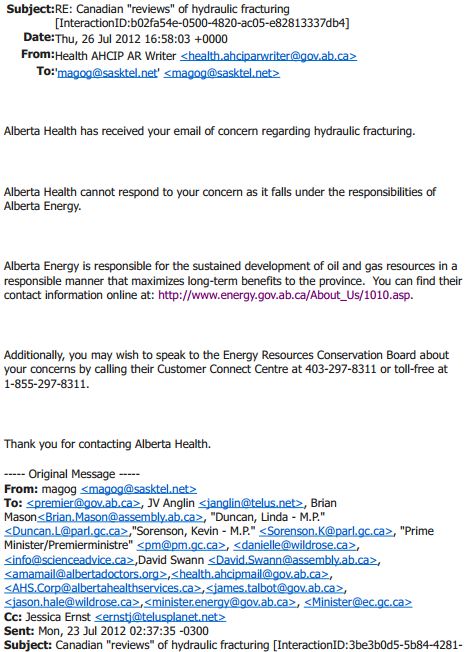
2011: Attorney General Schneiderman to Sue Federal Government Today for Failure to Study “Fracking”
2010: Natural Gas Operations from a Public Health Perspective
For many years, drillers have insisted that they do not use toxic chemicals to drill for gas, only guar gum, mud, and sand. While much attention is being given to chemicals used during fracking, our findings indicate that drilling chemicals can be equally, if not more dangerous.
2008: A Toxic Frac Fluid Spew The near death of emergency room nurse Cathy Behr
2007: Ernst testifies in Ottawa to Parliamentary Committee and beseeches the government to implement CEPA (1999) and enforce chemical disclosure of all toxic oil and gas industry drilling, fracing and servicing fluids. As of June 19, 2015, the Harper government still has not yet implemented CEPA or enforced the disclosure of toxic chemicals used in oil and gas wells and associated facilities.
2006 09 20: Ernst asks Alberta’s Chief Medical Officer of Health, Nicolas Bayliss, to help her and the Rosebud community deal with drinking water contamination after Encana frac’d their aquifers. Ernst received none. As of July 2, 2020, no federal or provincial health or energy regulatory agency or court in Canada has provided any help. Cowards.
2005: Alberta’s energy regulator banishes Ernst from energy regulation and judges her a criminal, in writing, copying the RCMP and Attorney General (without any evidence, trial, hearing, due process, arrests, fingerprinting or charges) in response to Ernst sending the “regulator” evidence of Encana breaking the law.
2002: Council of Canadian Ministers of the Environment (CCME) and Dr. John Cherry (ten years later, in 2012, appointed Chair of the Council Canadian Academies frac panel) release their report warning about unconventional oil and gas industry impacts and recommending baseline hydrogeological investigations to track oil and gas industry contaminants.
Eighteen years later, this is still not happening anywhere in Canada. (The “baseline” data collected in some jurisdictions (to protect industry and corrupt regulators), after decades of leaking oil and gas wells and facilities and frac’ing is assuredly not “baseline”)
Dr. John Cherry and his Council of Canadian Academies frac panel “experts” mysteriously left out the important 2002 CCME report in their 2014 frac report, knowing that what Cherry recommended 12 years earlier is not happening anywhere in Canada. Yet, they recommended nearly word for word, what Cherry recommended in 2002. “Expert” propaganda to frac us with.
Some time after October 2014, after Ernst repeatedly publicly pointed out the gross failings of the Council of Canadian Academies’ frac report, the CCME removed their 2002 report from their website.
